Table of Contents
With the advent of bikepacking bags, many people are looking for faster and more capable bike options for travel.
While cyclocross bikes can certainly be fast on dirt roads, they generally use cyclocross-specific gear ratios and have a limited tyre clearance of around 35mm. On the other hand, gravel and adventure road bikes handle 40mm+ tyres, offer lower bottom brackets and feature more comfortable handlebar heights for long rides.
Cannondale released the Slate platform 12 months ago, with the hope to create the ultimate road and off-road slaying machine.
So, how does it shape up?

Cannondale Slate Review in Numbers
10.20kg / 22.09lbs (Size XL with bidon cages, XT pedals and off-road tyres)
650B / 27.5″ Wheels
US $3520
4 Sizes
The Cannondale Slate is unique in a number of ways. Most people are drawn straight to the iconic Lefty suspension fork, but with wide tyres, a compact frame and road handlebars – the Slate certainly makes a statement.
With thanks to Cannondale Australia, I’ve been able to complete over 5000km of dirt roads, sand tracks and rocky singletrack on the Slate. This bike smashed Australia’s two longest off-road trails: the 1000km Mawson Trail in five days, and the 1000km Munda Biddi Trail in 10. It’s been on numerous road bunch rides, and it’s seen every weather and trail condition that you could possibly imagine.
Let’s take a close look at what exactly the Cannondale Slate can offer you.
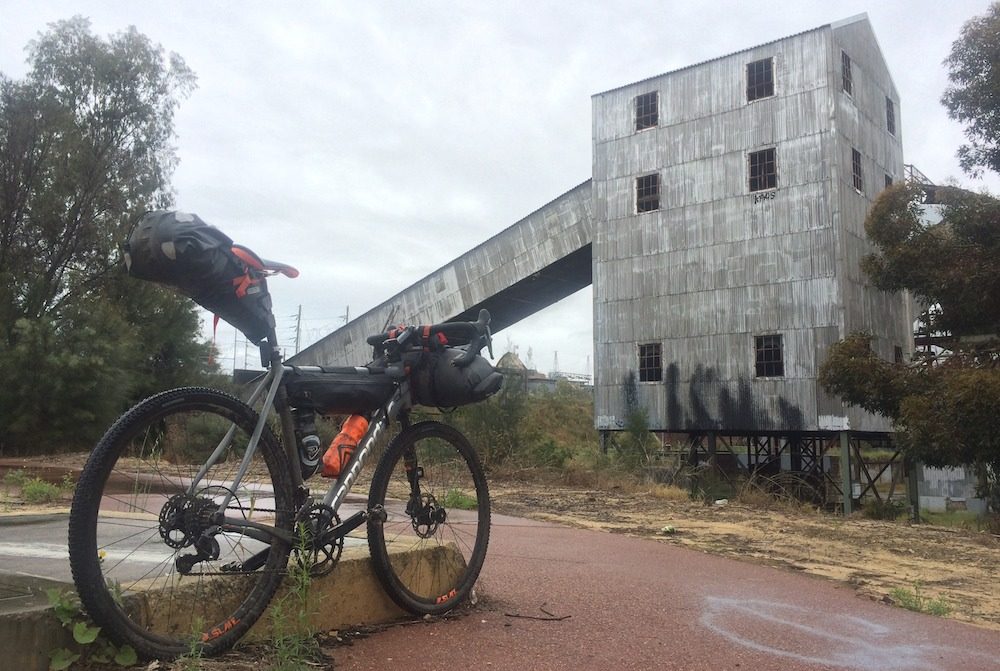
The Components
The Cannondale Slate Ultegra makes use of high-end components across the board. I had no mechanical failures throughout my testing period, and can really only offer praise for the overall specification.
Brakes
The Shimano R685 hydraulic road brakes are the standard to beat. They offer unparalleled braking performance in all weather conditions; in fact, every road bike could benefit with brakes like these.
One thing that I’ve noticed is the extra brake pad clearance from the rotor when compared to SRAM hydro brakes. This dramatically reduces the disc brake rub associated with muddy or gritty conditions.
Crankset
The Cannondale Si crankset has been around since the 1990s and has evolved to be very light and attractive. The screw-on, one-piece Spider Rings look drop-dead gorgeous and feel functionally as good as standard Shimano Ultegra chainrings.
The bottom bracket has ‘clicked’ and ‘ticked’ on and off since the start, which could be remedied by refitting the bottom bracket bearings (this says more about me). I’ve also found the anodizing on the cranks to be no match for the mud that has ended up on my cycling booties.
Gears
The 11-speed Shimano Ultegra gearing is absolutely delightful. The levers offer a really light action in both shifting directions, and the ergonomics of the hoods are compact yet grippy.
Although mountain bike derailleurs handle mud better than road derailleurs, I rarely felt limited by the conditions I used the Ultegra gearing in.
Wheels
The Cannondale wheels were brilliant. I’ve found them to be as stiff as I’d like both on-road and off-road.
They are still running 100% true as well, despite lots of really rough singletrack and some pretty reckless riding in between. It’s a nice touch that the rear rim is asymmetric, creating better triangulation of spoke angles, therefore balancing spoke tension and building a stronger wheel.
The Rest
The other Cannondale components like the stem, bars, headset, seatpost and seat are excellent. The finish is really nice, the products are ergonomic and the weight is competitive enough to make the bike sub-10kg (22lbs) without pedals.
I found that the Fabric saddle (made by Cannondale) to be really comfortable with a ‘performance’ body posture (ie. a reduced seat to bar drop). For those with a more aggressive position, you’ll find the saddle’s nose to be far too bulky.
The Suspension
The Cannondale Lefty Oliver with 30mm of travel is the true point of difference between the Slate and all other gravel bike options, and it is amazing. Not only is it light and stiff, but Cannondale has really nailed the damping system so that it feels firm at the start of the stroke, yet plush once you’re about 10mm into the travel.
This means that while seated you rarely notice the suspension, yet when standing you sink into the travel and it absorbs hits really well.
While you may think that having only one fork leg would make the Lefty feel unstable, the Lefty doesn’t pull to one side while you’re riding. The only time when having a Lefty is noticeable is while riding no-handed, but you quickly learn to counterbalance to accommodate for this non-issue.
The Oliver can be locked out for smooth road riding at the top of the crown.
The lockout isn’t a complete lockout, so you can compress the fork a little – this is ideal for the times when you hit a bump while you’re locked out. As it’s at the top of the head tube, it’s very accessible.
Weighing in at a fraction over 1100g, the Oliver is the lightest Lefty ever. It also seems to be really reliable given all the riding I’ve completed in adverse conditions.
I really wish that the Lefty Oliver could be fitted to many more bikes.
The Tyres
Although I didn’t experience any punctures with the stock tyres, a guy that I ride with did manage to slice a sizeable gash through his sidewall. This is the downside to ultra-light, supple tyres. I found myself running the stock tyres at high pressures off-road to avoid the same situation – my ideal tyre would be a bit more heavy-duty / reinforced in the sidewall.
For the majority of my off-road riding, I used the Bruce Gordon Rock n Road. These tyres aren’t the most technologically advanced, but have a good off-road grip overall.
They were, unfortunately, a bit slower than many modern mountain bike tyres that I like (like the Schwalbe Thunder Burt) as well as lacking some side knob bite in the singletrack.
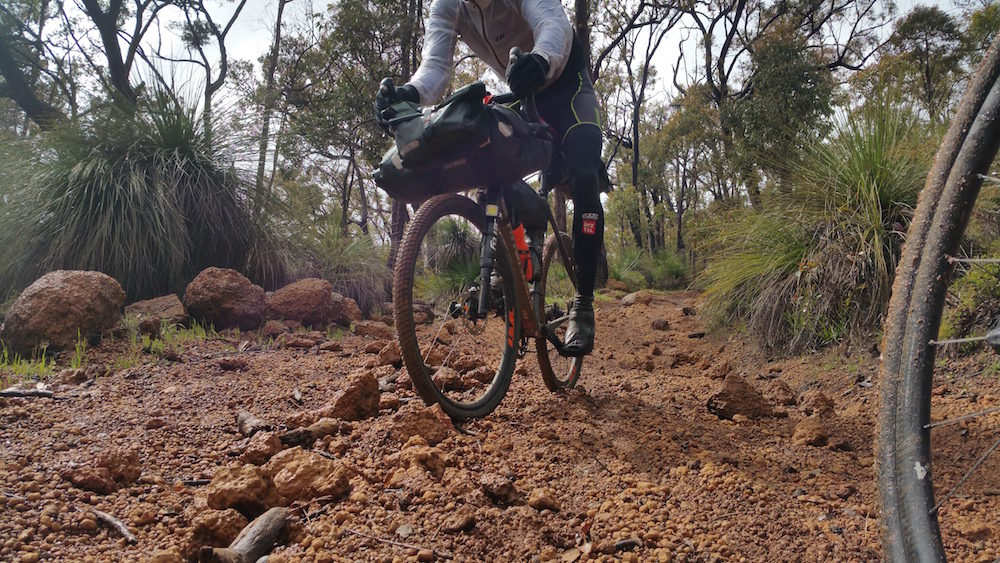
One of the biggest limiting factors for the Cannondale Slate is the availability of tyres in 650x42C, especially for off-road riding. Here are nine different options I’ve come across:
Off-Road Options:
Bruce Gordon Rock n Road
Soma Cazadero
Soma B-Line
Surly Knard
On-Road Options:
Schwalbe G-One
Soma Grand Randonneur
Compass Hetre
Panaracer Slate
Panaracer Pari-Moto
The Wheel Size
After years of testing, I’ve come to accept that wheels can be fast in many diameters, and therefore the Slate’s 650B wheels feel quick. Within the 26-29” size range, I’ve found it’s more about the tread pattern, rubber composition and volume of tyres for off-road riding.
I don’t have a problem with the wheel size per se, but I would love it if the Slate was optimised for slightly larger diameter wheels. My reasoning is that it permits the use of two different wheel sizes with say, 700x35C or 650x47C tyres.
I’ll go into more detail below about how this could make the Slate much more versatile.
I found that the tyre clearance on the Slate is inadequate for muddy conditions. With just a little bit of mud stuck to the top of the tyre, the wheels rubbed constantly on the chainstays. The Bruce Gordon tyres also liked to collect small rocks in them, which would graze the frame, ticking away and refusing to come out until I stopped the bike.
I firmly believe that there should be at least 10mm on either side of an off-road tyre, but preferably more.
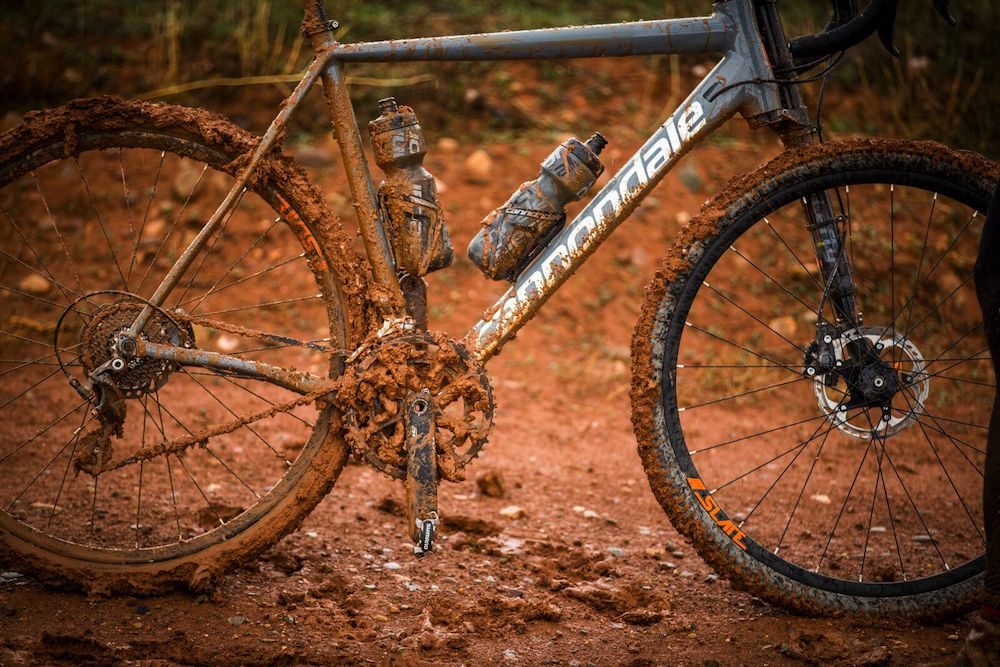
The Gear Ratios
For the type of riding that I wanted the Slate to do, I found that the Slate Ultegra comes with inappropriate gears.
The gear range of the Slate is 33-123 gear inches. This is fine for many sealed roads, but even as a really strong rider, I found myself time and time again requiring smaller gears.
Even on my road bike, I have better climbing gears. These low ratios are a necessity for steeper off-road gradients; even more so if you’re carrying bikepacking gear.
If this were my bike I’d combine a Shimano XT rear derailleur, a Wolf Tooth Tanpan and an 11-40 tooth cassette to achieve a 23-inch low gear. There are countless times over the last 5000km where that gear would have been handy!
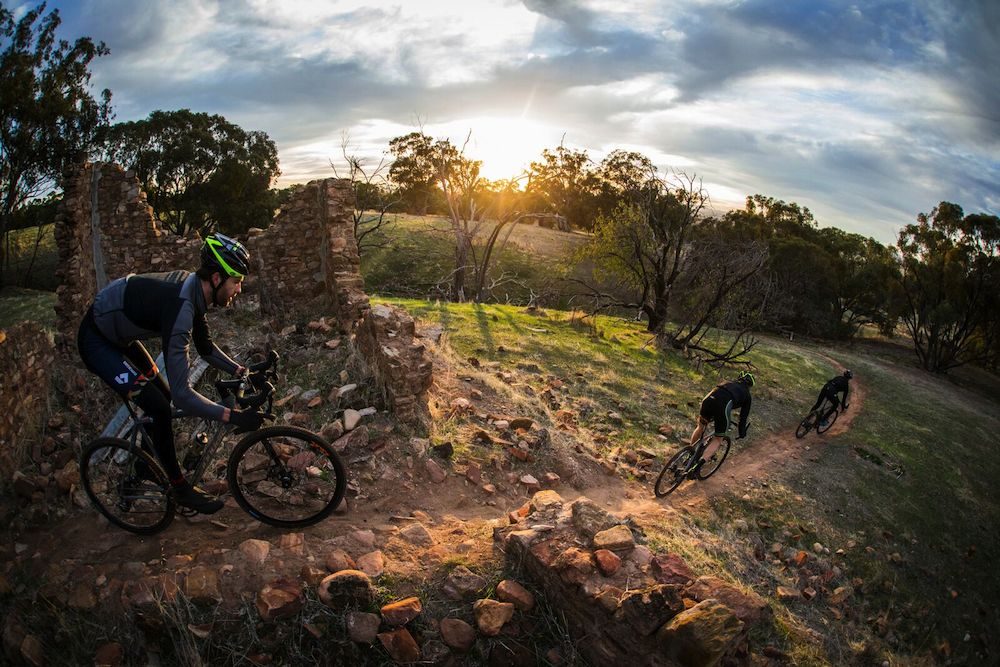
The Sizing
The Cannondale Slate sizing is fine until you get to the XL size. As the crown of the Lefty is the same for all bike sizes, it limits the length of the XL head tube. This results in a really low end for anyone on the taller side. The large and XL models share the same head tube length.
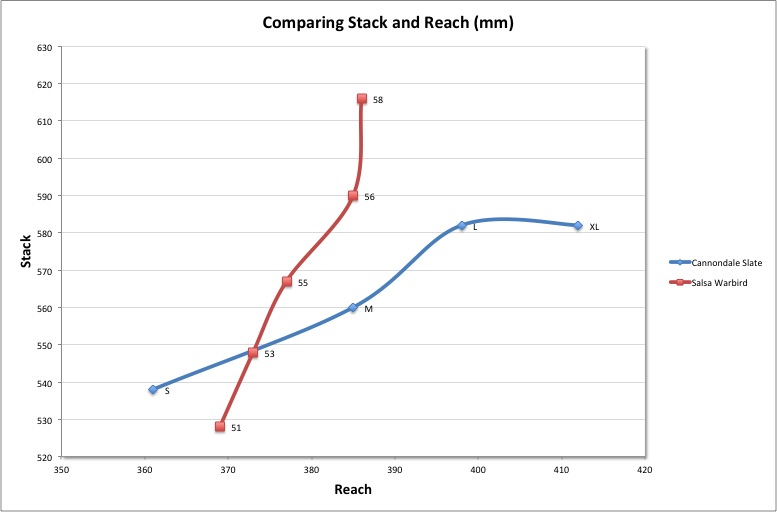
When we graph the Cannondale Slate’s sizing against another popular adventure bike, the Salsa Warbird, it’s immediately apparent that the larger Slate sizes are longer at a disproportionate rate to their front end height (head HERE for detailed sizing information).
An XL size should ideally have a stack of 610mm+ to be sized appropriately for riders above 185cm. Another potential issue for tall folk: with my 96cm inseam, I found that I had to run the seatpost a little above the maximum insertion.
Cannondale Slate Review: The Ride
I spent the majority of my time riding dirt roads on the Cannondale Slate and was happy to find that in a handling sense it excelled for the majority of the time.
The Cannondale Slate was often very confidence-inspiring, especially as the conditions got rough. This is due to the combination between the wide tyres, excellent brakes and suspension fork, as opposed to the frame design itself.
The suspension fork is an incredible asset to have on rough, corrugated or pothole-riddled dirt roads, as it provides additional front tyre traction and allows you to loosen your grip at the handlebar. As I mentioned above, I really wish the Lefty Oliver was an aftermarket fork option for other adventure road bikes.
The steering speed of the Slate is a little twitchier than I prefer, most noticeably when I was riding technical sections of the Munda Biddi Trail without my front bikepacking bag. With the 3kg load on the handlebar, the bike took tight turns between trees really well and felt much more stable at high speeds.
The Cannondale Slate frame offers exceptional lateral stiffness.
It’s also a very smooth ride as a result of the wide tyres, small diameter seatpost and padded saddle. Assuming that this bike is set up well for you, I can’t see comfort ever being an issue.
I’ve found that the Slate is better as a road bike that you ‘cruise’ on, rather than ride ‘fast’. It’s quicker than you might perceive 42mm tyres to be – those low-pressure fat slicks roll along nicely at about 30km/h.
That said, when I was riding more aggressively in road bunch rides, I found the wallow of the tyres to be energy-zapping and frustrating. I also found that the bike starts to struggle at speeds over 35km/h due in part to the additional aero drag of the suspension forks’ frontal surface area.
Here’s How The Slate Could Be Better
Warning: The following contains bike-nerd discussion.
Given that this blog has a clear focus on bike design and component choice, it would only make sense that we look at how the Cannondale Slate could be improved.
For a majority of dirt road use with a focus on undulating roads, the Slate is essentially dialled (perfect). However, I firmly believe that Cannondale has missed the opportunity to get the most out of the Slate platform as an adventure bike.
Here’s what I would change:
Steering speed: The Slate is designed around 66mm of trail (read what that is HERE). While the steering speed feels great on the road, a slower steering speed is preferable in rough, technical trail conditions, which is why I prefer the bike with a 3-5kg handlebar load. To optimise the steering speed for off-road use, I would slacken the head tube angle by about one degree to give it ~72mm of trail.
Wheels and Tyres: By designing the bike around an overall tyre diameter of ~685mm rather than ~670mm, the Slate could be optimised for either 700x32C or 650x50C tyres. This would give the Slate the ultimate versatility as you could interchange two different wheelsets on one bike.
It would also open the Slate up to the following awesome 650B gravel tyres: Compass Switchback Hill 48C, WTB Horizon 47C, Maxxis Re-fuse 50C and Schwalbe Thunder Burt 54C.
I’d love to see the 2018 Cannondale Slate with 650B x 47mm tyres as standard. If Cannondale made this switch, a 700x40C tyre would increase the bottom bracket height by just 8mm, and a 650×54 would increase it by 3mm.
Gears: As is, I think the Cannondale Slate should be spec’d with a compact crankset and 11-32t cassette. 50-11t is still a very high gear, and a 34-32t (27.6 gear inches) would be appropriately low for most uses.
Sizing: As mentioned previously, the XL size is problematic for tall riders. At a minimum, I’d like to see the XL size come with a longer steerer tube. But ideally, Cannondale should produce a Lefty upper crown with 3-5cm of rise for the larger sizes so that they can increase the length of the head tube.
Summary
We have a huge range of bike options these days. In the gravel and adventure category, we can pick bikes that are essentially road bikes with provision for wider tyres (like the Specialized Diverge) right through to bikes like the Curve GMX that use mountain bike wheels and a cyclocross frame geometry.
The Slate falls somewhere in the middle, but with a bit of a mixed message.
It’s optimised for the road in a lot of ways but has features that are far better off-road (like the suspension fork). It takes the middle ground when it comes to tyre width and steering speed which is great under some conditions, but not under others.
It’s a true jack-of-all-trades.
If you like hills or you’re going to be bikepacking, the first thing to do with the Slate is to switch out the derailleur and cassette to achieve climbing gears. If that were not low enough, I’d recommend ordering some compact 50-34t Spider Rings with your bike too.
I would love to give the bike four stars, but I believe that Cannondale has missed an opportunity to make use of the “Road Plus” wheel standard – this bike is begging to be optimised for off-road use.
If Cannondale designed this bike around a slightly larger tyre diameter, it would permit narrow 700c tyres or wide 650B tyres. It would even give Cannondale the option to offer two different stock Slate options – one for off-road and the other for on-road. This would allow the consumer to choose how their Slates ride. And should we want to cover more uses, we could buy that second wheelset.
Despite my criticisms, the Cannondale Slate is the perfect bike for a really specific use. I genuinely loved riding this bike, and you will too if the majority of your riding is on flat dirt roads with a bit of tarmac on the side. After all, there is no better bike than the one that perfectly fits a niche.


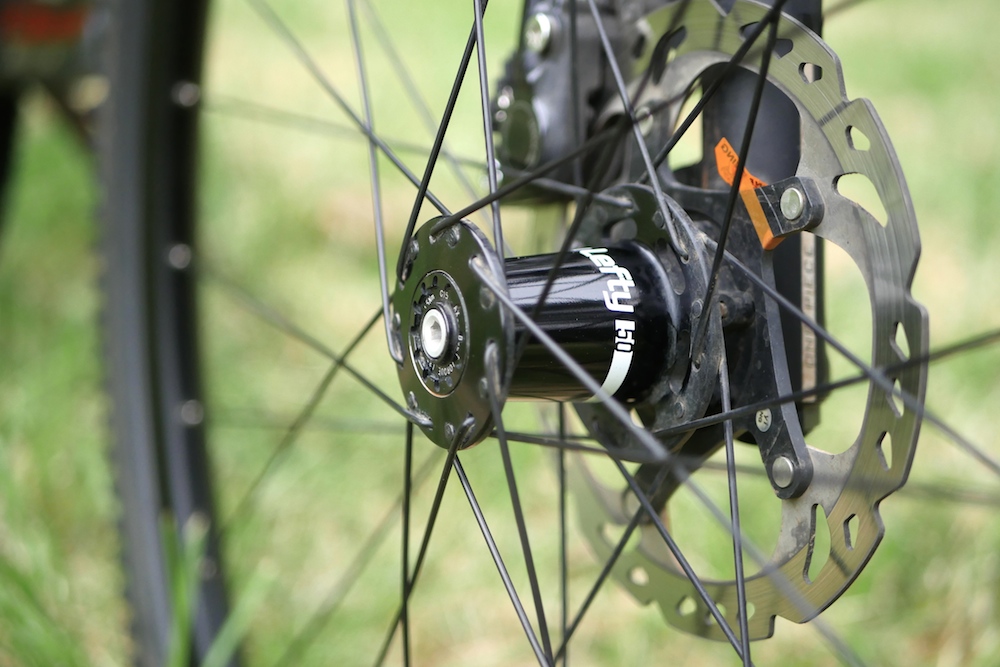
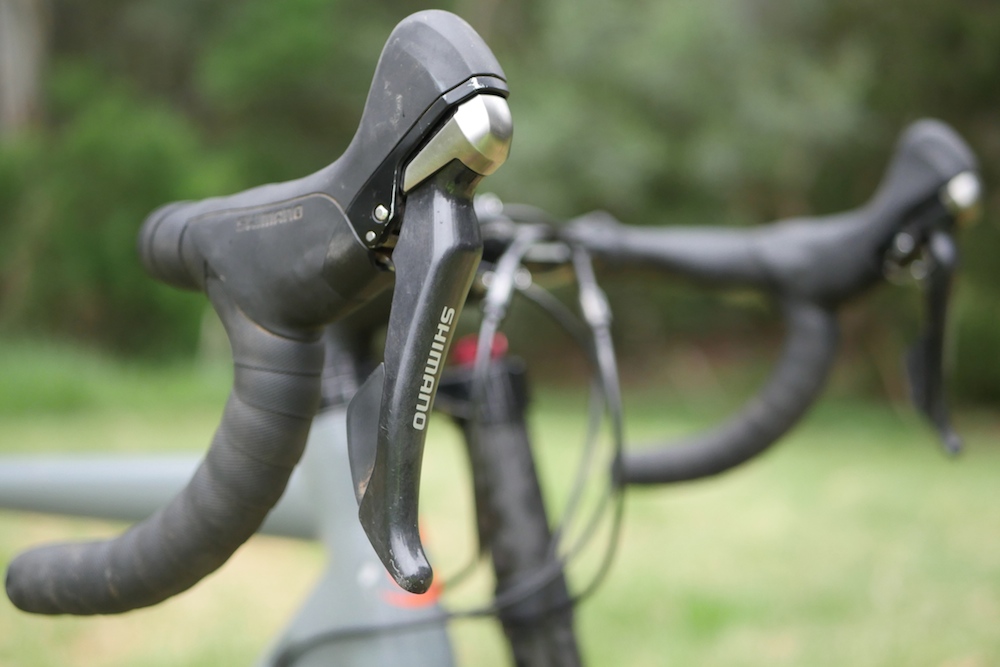
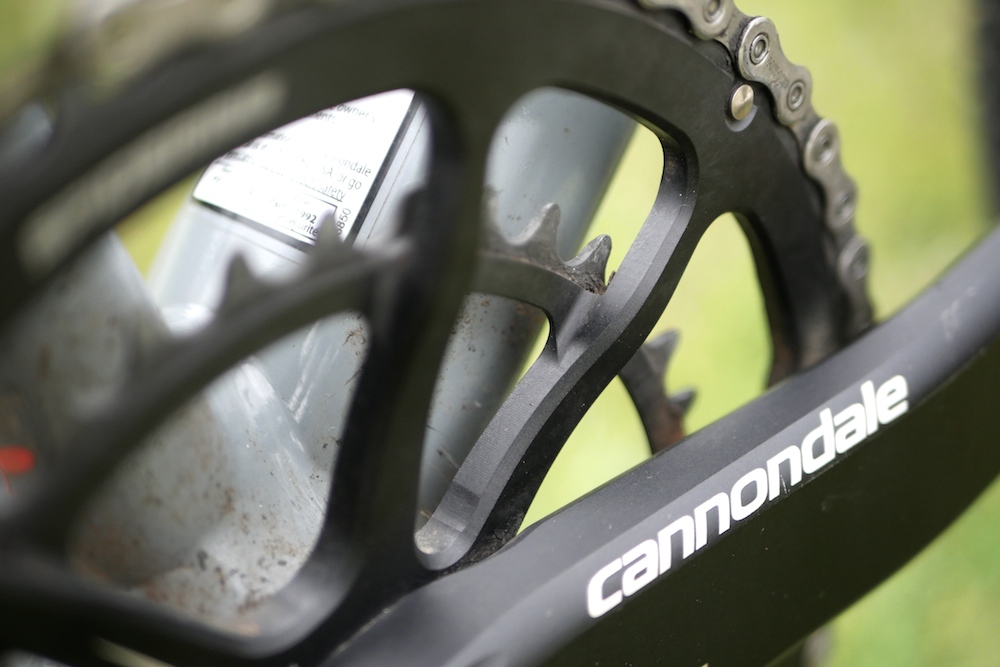
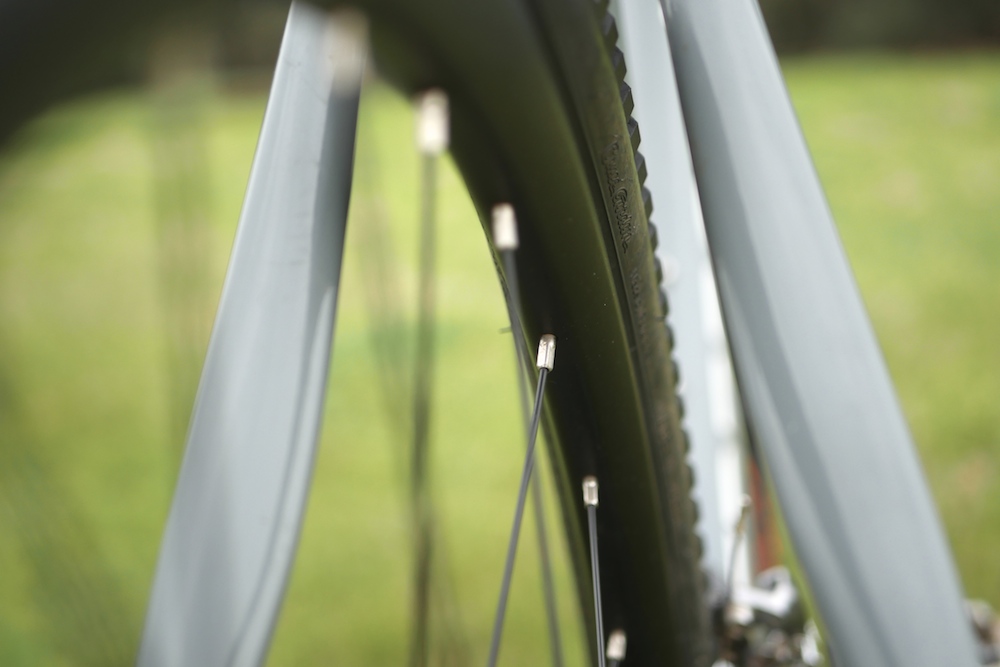
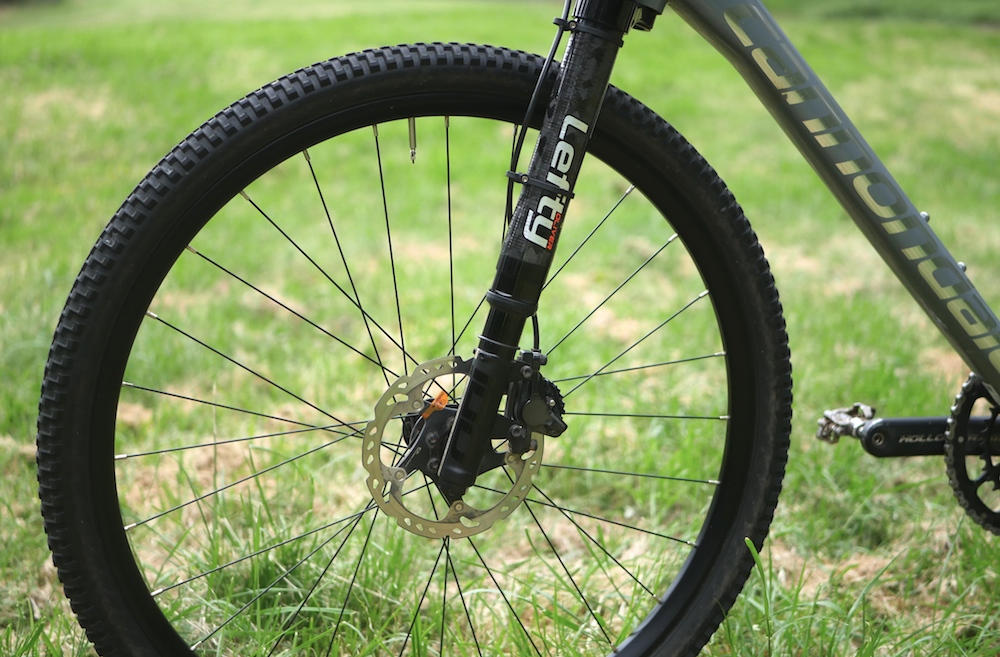
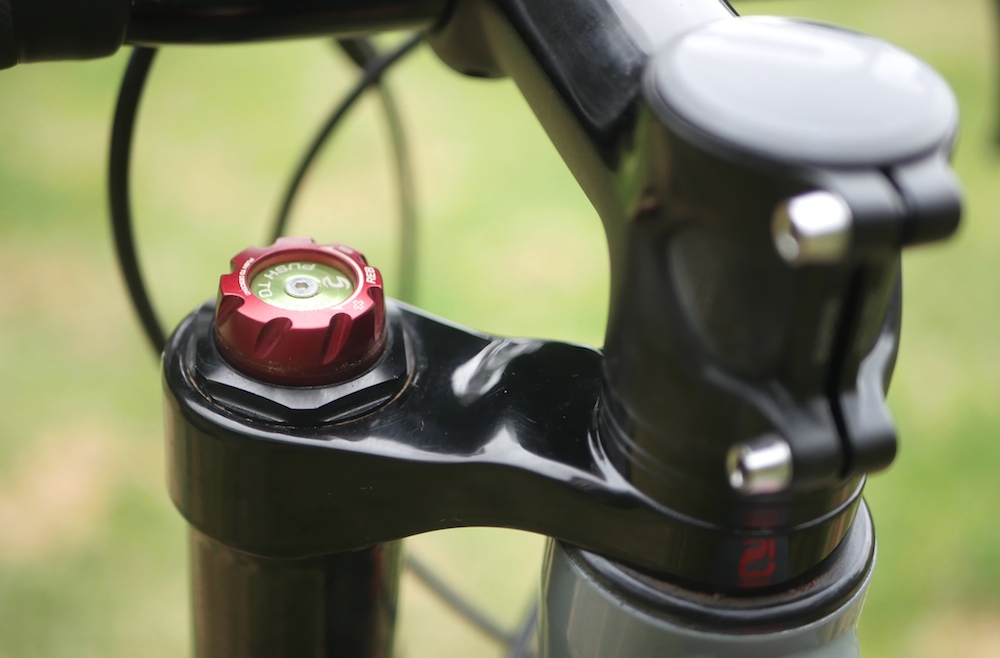
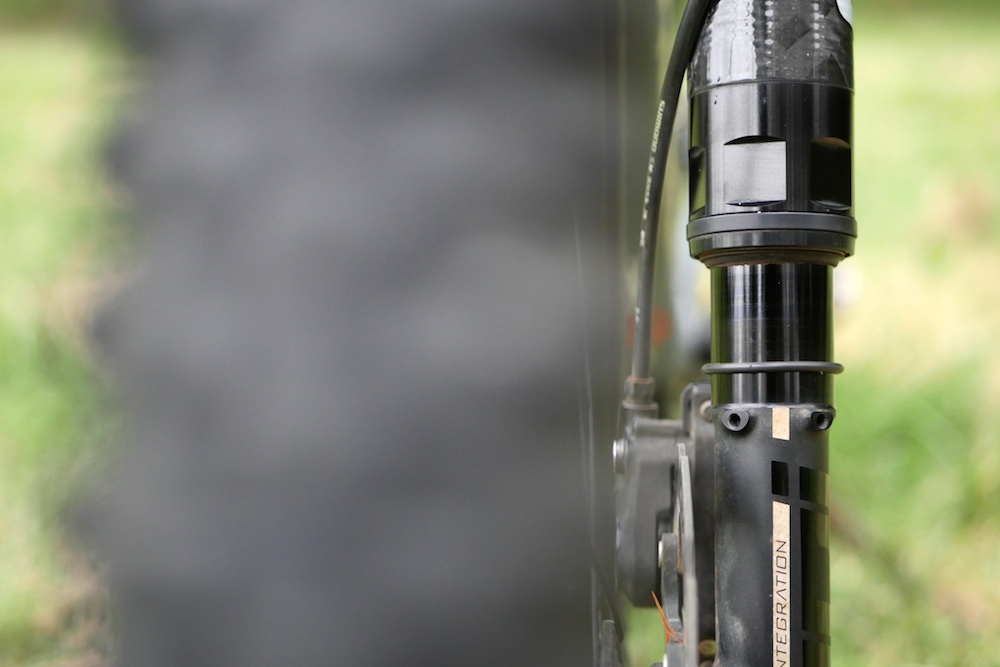
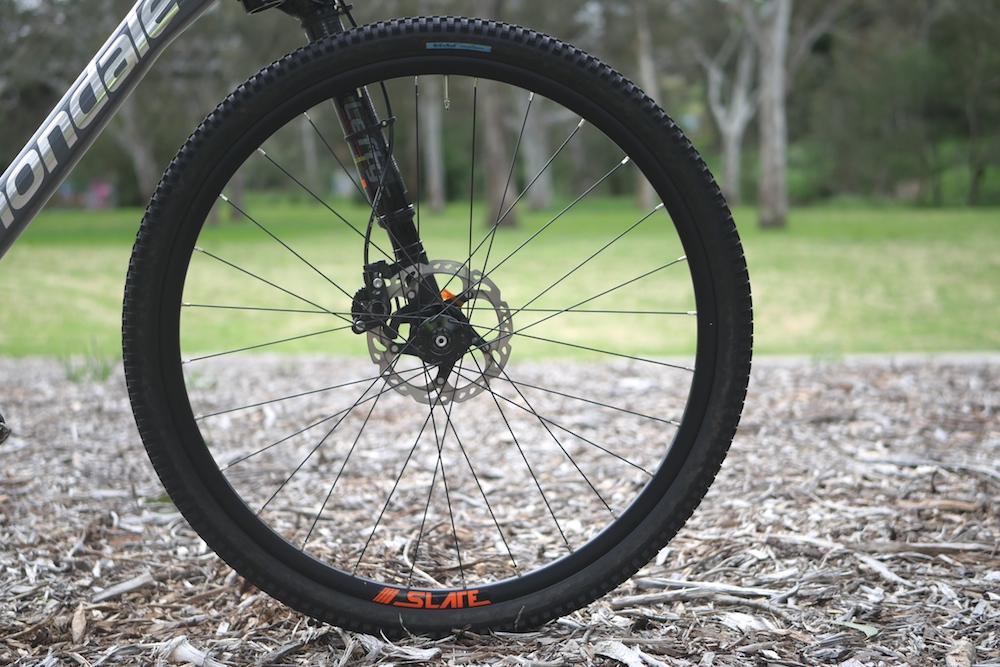
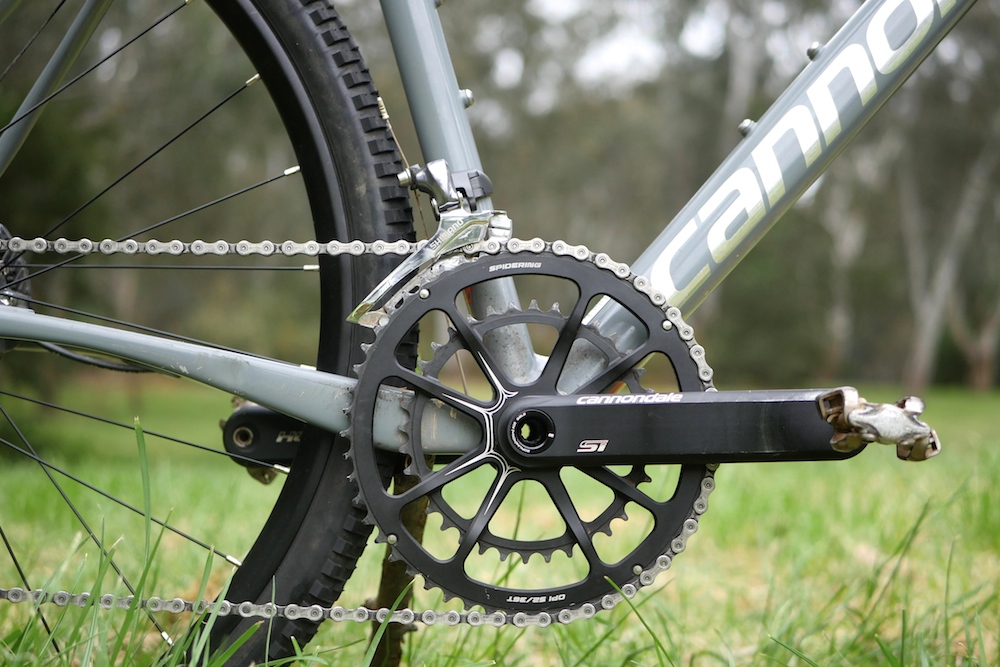
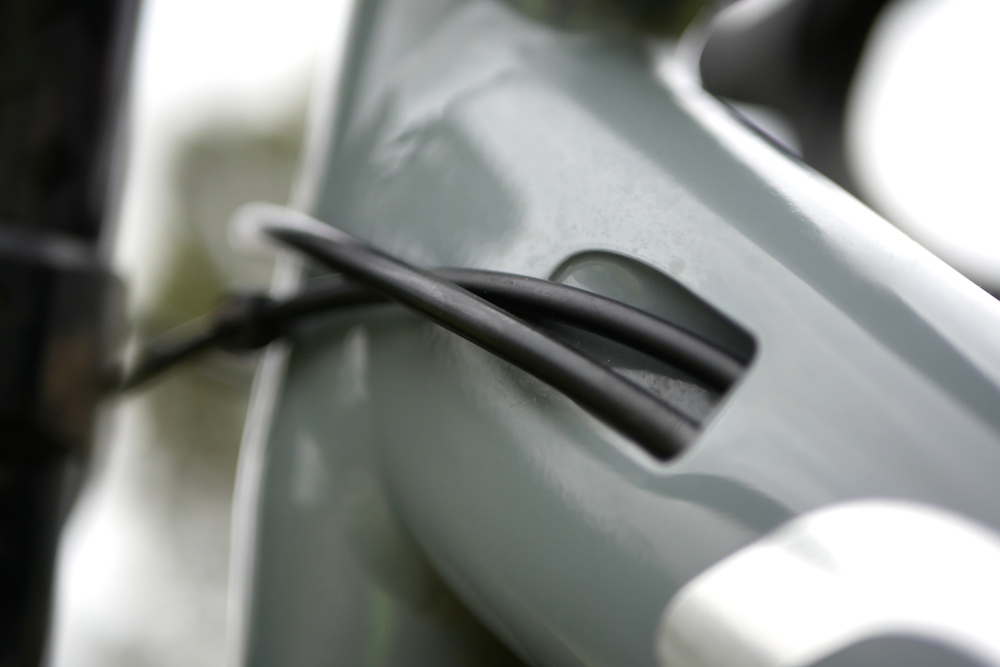
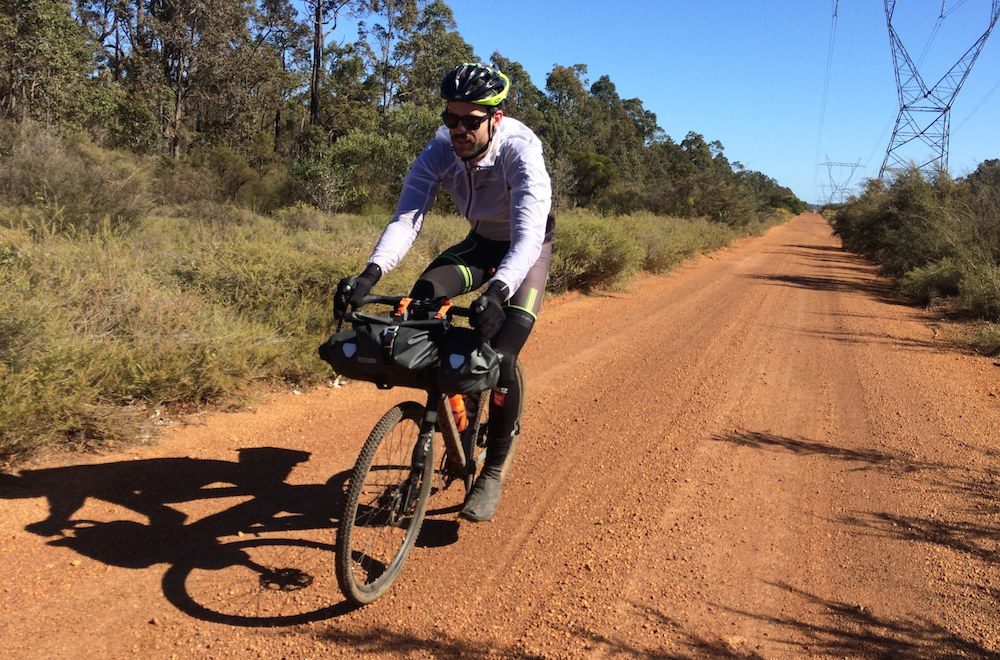
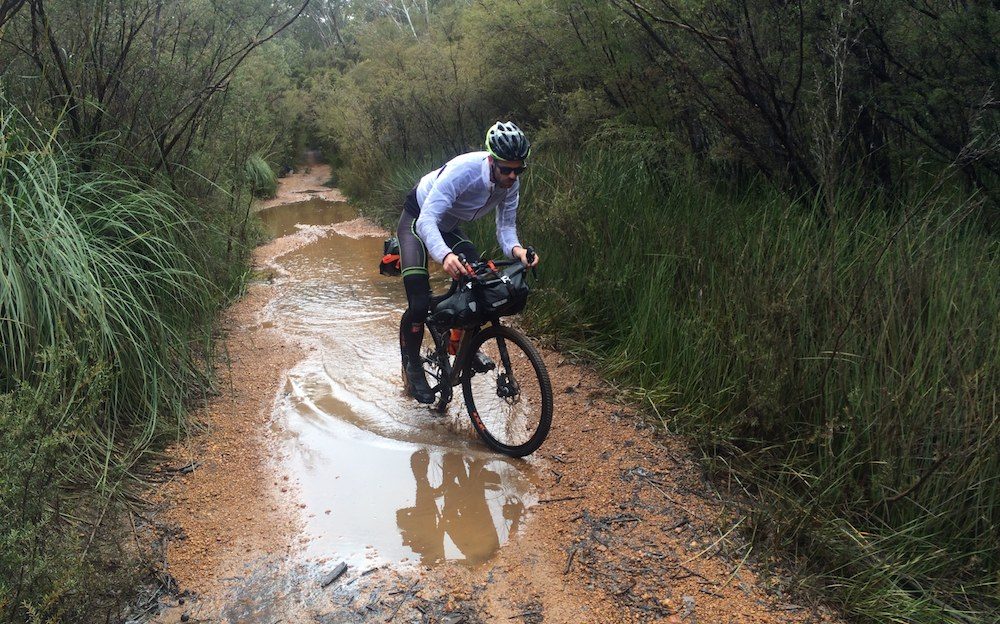
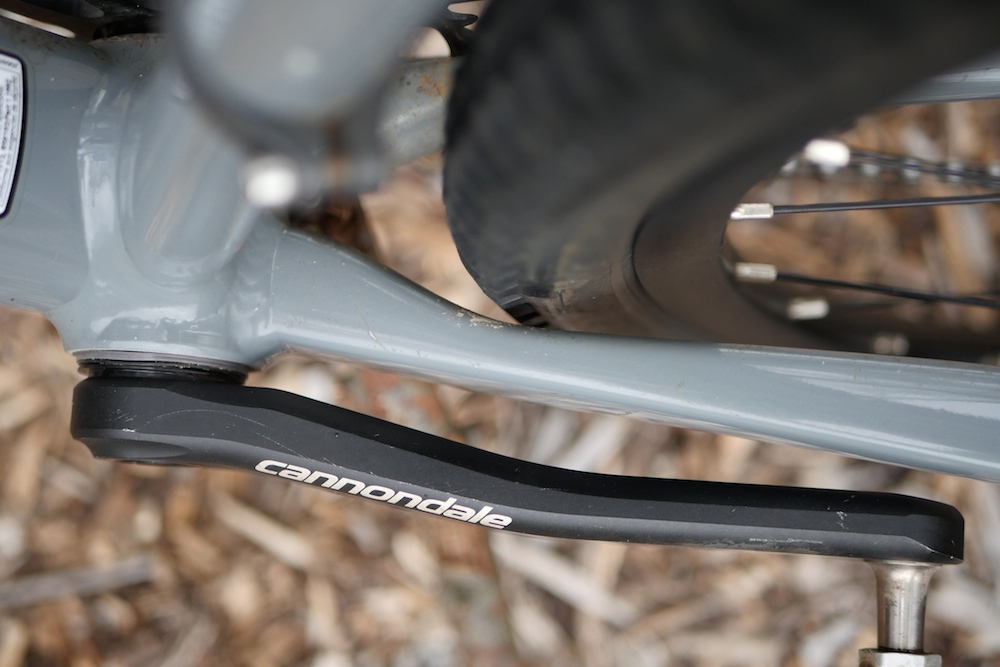
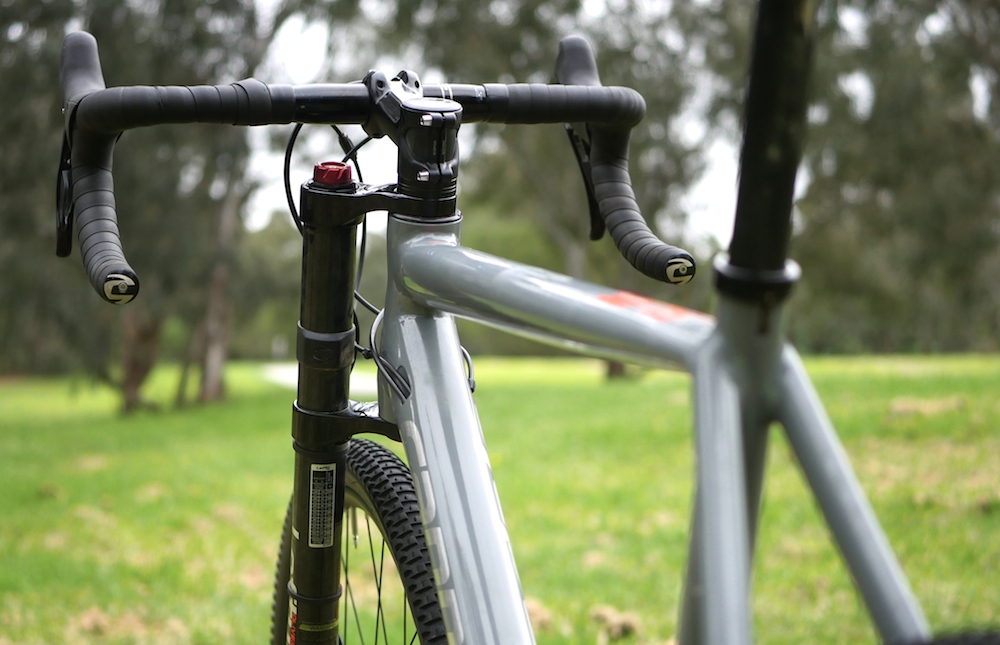
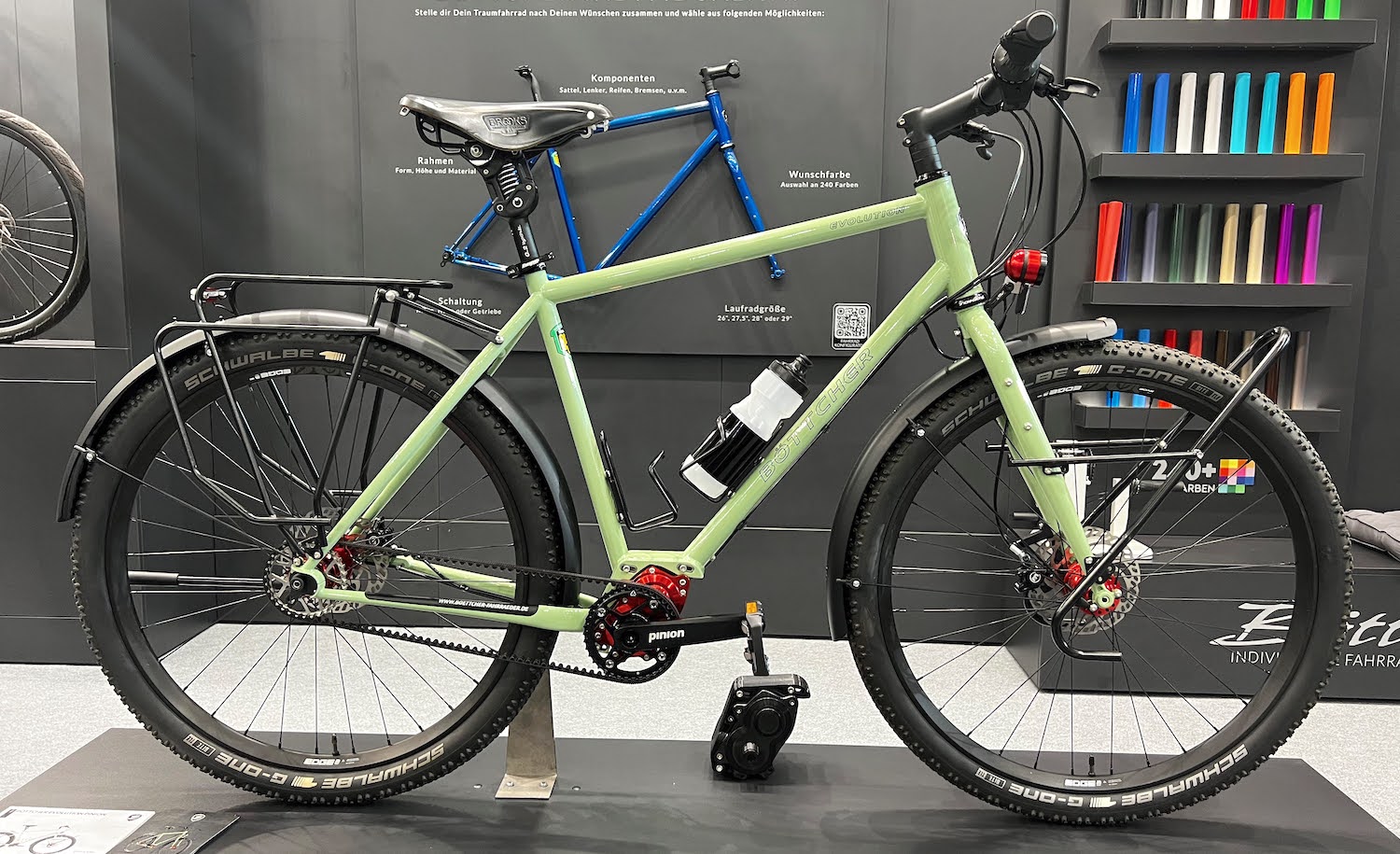



missing brazeons for third water bottle at down side of down tube is huge minus! please add that
The sound coming from the bottom bracket is due to the press fit BB30. Apart of that and the careful maintenance of the lefty the bike is great.
A friend has one of these — he found as you did, that the tire choices are unnecessarily limited by Cannondale’s design choices.
I’ve been riding a Slate Force CX1 for a year with over 2000 km on it – I wrote a wee blog post about it for those that are interested here https://www.tenfourty.com/2016/12/29/2000-km-with-the-cannondale-slate/
The short version is that this is an awesome go-anywhere-do-anything bike that is pure FUN! Stop thinking about it and get it!
Looks like the Salsa Warbird sizing is more broken than the Slate sizing. There is no increase in reach from 56 to 58. Being a tall rider myself (195cm) I often have a problem with the bike feeling too short with a cramped cockpit. I haven’t tried the Slate so I can’t speak for it’s sizing specifically. The temptation is definitely there.
The thing with ‘reach’ is that it’s easy to accomodate for (within reason). You can switch your stem to something with 10-20mm extra length. It’s much harder to add ‘stack’ to a front end. Given your height, I’d definitely recommend testing a Slate in your size before buying one.
The problem with increasing reach with a longer stem is that the bike becomes more twitchy. I like stability. The Salsa Warbird sizing reminds me of clothing sizes where length is increased up to medium and then the clothes just get wider. The Slate is longer while the Warbird is wider.
From a stem length discussion / bike designer…
“The longer the stem,” explains Tom Kellogg, “the more the rider’s weight pushing forward on the bars tends to keep the front wheel pointing forward.” As a consequence, the bike becomes more stable, especially at high speeds, which accounts to some extent why pro riders normally opt for a shorter frame and a longer stem. The extra stability also helps with the control of high profile race wheels in windy conditions.
I stand corrected. Admittedly I don’t have much experience with road bikes. My comment was based on trail biking where you want a shorter stem to move weight backwards when descending to avoid going over the bars. Thank you for posting this.
To be honest I think it’s pretty complex. There’s certainly a ‘long stem to control steep steering’ (90s hardtails) vs ‘short stem to muscle a slack H/A around’ (modern trail bike). But there’s trail to be considered. Plus CoG, stack height, length of frond triangle etc.
I have the Ultegra Slate that you have in the review and have been running the WTB Horizon tires for about 2000km without issue. If you wanna bump up that review score based on tire widths then I think you can.
Awesome to hear they fit – will be good to know for other Slate owners. Have you got a picture with the clearance?
Will take one and post it. I can tell you now it’s bugger all clearance 🙂 like hairline stuff at about 50psi, with 95kgs on it there is no rubbing, any higher and there is a small bit of rub.